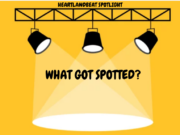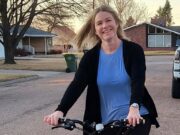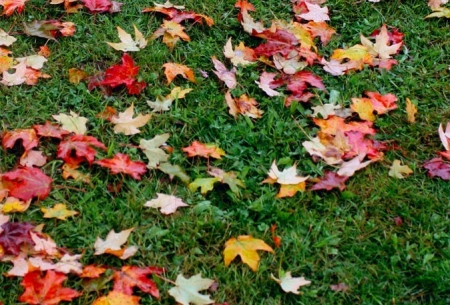Extension Update by Gary L. Zoubek - Extension Educator
Coming Events
Nov. 3, 2011 – Ag at the Crossroads Conference, Lancaster Event Center, Lincoln
Nov. 12, 2011 – Power of Red Open House, East Campus Union, Lincoln http://casnr.unl.edu/openhouse
Nov. 15, 2011 – Landlord/Tenant Cash Lease Workshop, Sokol Hall, 5:00 p.m., Wilber
Nov. 18, 2011 – York County Corn Grower Banquet and LEAD Presentation, 6:30 p.m., Chances R, York
Nov. 30, 2011 – Farmers/Ranchers College, Dr. Dave Kohl, 1p.m., Opera House, Bruning
Dec. 15-16 – AgSMARTS Program, Extension Office, Seward
Cropping Update
We’ve continued to make great progress with harvest! It’s always difficult to estimate harvest progress, but I’m guessing we’re around 85% complete with corn and 99% complete with soybeans! Over all the yields are not record breakers, but with very little drop-off of yields on the dryland acres, we’ve got to be happy with this seasons yields.
With today being November 1st, some producers that have completed harvest and considering anhydrous ammonia applications. The first step is to collect residual nitrate samples from the 2-3 foot depth so that you’ll have a good estimate of nitrogen needs. It’s also important to not apply anhydrous ammonia in our area until after November 1st and when soil temperatures are below 50° F and on the way down!
If nitrification inhibitors such as NServe or DCD are used, the recommended minimum temperature is 55° F. At today’s nitrogen prices, producers should consider using a nitrification inhibitor. Factors to consider when considering NServe are the price of nitrogen and the inhibitor, the soil moisture status and the potential for leeching or denitrification. Increased leeching or denitrification will occur on light soils, in soils that have a full profile of water and if we receive excessive fall or spring rains!
If time was not an issue we’d suggest applying our nitrogen to corn in the spring and during the growing season, but many factors including time and economics dictate the timing and method or nutrient application for various producers. This would be a great Quad County On-Farm Research trial. Treat replicated strips with a nitrification inhibitor and strips without and see the effect next season on yields! I’d be glad to work with you on this type of study, just give me a call at 402-362-5508 or email me at gzoubek1@unl.edu.
I checked the soil temperatures as I’ve prepared this column and it averaged 48.8° F just slightly below the normal average of 49.2° F for this time of the year! For the latest soil temperature updates go to the CropWatch website at: http://cropwatch.unl.edu/web/cropwatch/cropwatchsoiltemperature.
Last season and again this season I’ve received a few questions about applying anhydrous ammonia to dry soils? It so happens that I just today I received an update from John Sawyer who is in the Department of Agronomy at Iowa State!
He indicates that yes dry soil can hold ammonia and that ammonia dissolves readily in water, but it is held or retained in soil by clay and organic matter. The problem with dry soil and low moisture is that soil moisture is needed to temporarily hold (“go into solutionâ€) the ammonia so it can become attached to clay or organic matter as ammonium. If dry soils are cloddy and do not seal properly, the ammonia can be lost at injection, or seep through the large pores between clods after application. Therefore, proper depth of injection and good soil coverage are a must for application into dry soils. Wing sealers immediately above the outlet port on the knife can help close the knife track, limit the size of the retention zone, and reduce vertical movement of ammonia. Closing disks can reduce ammonia loss by covering up the injection track with soil that traps the ammonia as it moves to the soil surface. Reducing the application rate or narrowing the knife spacing reduces the concentration of ammonia in each injection band.
His bottom line was, “Be mindful of what is happening at application, especially if soil conditions are not ideal. If you make an application round in the field, and you can still smell ammonia from that application, then you should make adjustments or wait for better conditions. If the soil is breaking into clods, there isn’t good coverage of the knife track with loose soil, and ammonia is escaping (remember your nose tells you if ammonia is escaping; a white vapor is condensed water vapor, not ammonia which is colorless), then stop and either change the way the equipment is working or set up, or wait until the soil has better structure or moisture.†John’s update is at: http://www.extension.iastate.edu/CropNews/2011/1028sawyer.htm.Â
Corn Grower Banquet and LEAD Presentation Planned
I’d like to invite all area corn growers and those involved in the industry to plan to attend the Annual York County Corn Grower Banquet planned for Friday November 18th at 6:30 p.m. at Chances R here in York. Tickets can be purchased from me at the Extension Office located at 2345 Nebraska Avenue or from any of the Board of Directors. They are Clark Pickrel, Gale Gruber, Rick Gruber, Boyd Stuhr Jr., Ryan Wiens, Dale Moore, Dennis Scamehorn, Bryan Mason, Ron Makovicka, Dave Dickerson, Kim Shepherd, Tom Ritzdorf or Dan Stork!
It should be a great meal and a great LEAD presentation! I hope you’ll plan to attend.
Many Educational Opportunities Available
With harvest winding down, if you look at my list of coming events, you’ll see several educational opportunities that producers and landlords can attend. They include:
Landlord/Tenant Cash Lease Workshops
The University of Nebraska-Lincoln Extension is hosting and a series of Landlord/Tenant Cash Lease Workshops that are sponsored by the Nebraska Soybean Board. Those in our area will be held:
Nov. 15 – Wilber, Sokol Hall, Saline County Extension, 402-821-2151
Dec. 6 – Hastings, Adams County Fairgrounds, Adams County Extension, 402-461-7209
Dec. 7 — Central City, Community Room, Merrick County Extension, 308-946-3843
This is one of the topics that I receive many questions about. Workshops begin with 5 p.m. registration and conclude at 9 p.m. at each location. Discussion topics will include:
- expectations from the lease, including goal setting for the rental property;
- lease communication, determining appropriate information sharing for both the tenant and landlord;
- tips for farm leases that include relatives;
- irrigation system questions, as they pertain to setting lease rates; and
- alternative cash lease arrangements and flexible provision considerations
Other topics, such as grain bin rental, will be covered as time allows. A meal and handouts are provided. Workshops are free, but registration is required to reserve a spot. Participation is limited. To register, contact the local Extension Office hosting the workshop.
2011 Ag SMARTS Program Offered in Seward
Economic uncertainty and marketplace instability has increased risk for agricultural producers. A University of Nebraska-Lincoln Extension program, Husker Ag SMARTS, can help producers understand this risk and improve business skills. Husker Ag SMARTS, offered in Seward, is a six-day business management program that will enable participants to strengthen management abilities, increase responsiveness to business challenges and help build technical skills.
Topics include goal setting, business and marketing strategic planning, financial competency, personnel management and succession planning. These intensive sessions will include interactive discussion, case study analysis, computer-based simulations, hands-on training and practice, and discussions with other successful individuals in the industry who use these skills and concepts, Jones said.
The program is consists of three, two-day work sessions and is limited to 20 participants. The meeting dates in Seward will be: Dec. 15, Dec. 16, Jan. 10, Jan. 11, Feb. 7 and Feb. 8.
Registration is $600, if registered by November 15. All educational materials, meals and breaks are included. Participants are responsible for lodging and travel expenses.
To register, a $100 deposit must be submitted when registering and the balance will be due at the end of the first session. For more information and a registration form, visit: http://johnson.unl.edu/web/johnson/agsmarts.
Power of Red Open House
This is my final reminder to encourage potential students, transfer students and parents to attend the Power of Red Open House planned for Saturday November 12th in Lincoln. The open house will be from 9 a.m.-2 p.m. at the Nebraska East Union on UNL’s East Campus and will give will allow those attending to meet with UNL faculty and staff, experience campus and learn about the college’s many academic areas.
Optional tours begin at 2 p.m. Preregistration for the open house is due Nov. 4. For more information or to register, visit the Web at http://casnr.unl.edu/openhouse, or call 1-800-742-8800, ext. 2541. As I’ve mentioned before, let me know if you’d like more information about any of the departments at UNL. It’s a great place to attend school!
Yard and Garden
Now that most of the crops in the garden are gone, have you had a chance to cleanup your garden? By disposing of the diseased plants can reduce potential problems next season!
Have you made your fall fertilization to your turf yet? If not, I’d get it done soon. Our recommendation for the final fall fertilization has changed and has been reduced from one lb. of actual N per 1000 sq. ft. to ½ to ¾ lb. N per 1000 sq. ft. Turfgrass may not take up all of the nutrients at the higher rate with the cooler temperatures of late Oct to Nov, which can increase nutrient leaching or run-off issues. Use fast release sources if applied close to the last mowing or slower release sources can be used when applied earlier in October, farther from the last mowing.  Fall fertilization is important for cool season turfgrass to encourage production of storage products that help plants better tolerate stresses of winter and next year’s growing season, and for spring rooting. With few exceptions, soils in Nebraska have adequate levels of phosphorous. Select a phosphorous free fertilizer whenever possible.
I’ve chopping up the tree leaves on my lawn by mowing on a regular basis to prevent a heavy layer buildingâ€up on turf before winter. Heavy layers of tree leaves that shade the grass can smother and kill grass yet this fall, or create conditions favorable for snow mold disease. After mowing, the pulverized leaves should not cover the turf but filter into turfgrass so green grass blades are exposed. Research at Purdue and other Midwestern universities shows that tree leaves can be mulched without detrimental effects on the soil or turf.
Have you turned off your sprinkler system or stopped irrigating your turf? We’ve had 1.37†of rain in September and October compared to our normal 4.38†for the York area! It’s a good time of year to have a drought, but some of the turf under trees is showing drought stress. Hopefully we’ll get some rain in the next few days, but if not depending upon your situation, we may want to water trees, ornamentals and turf prior to the soil freezing!



































